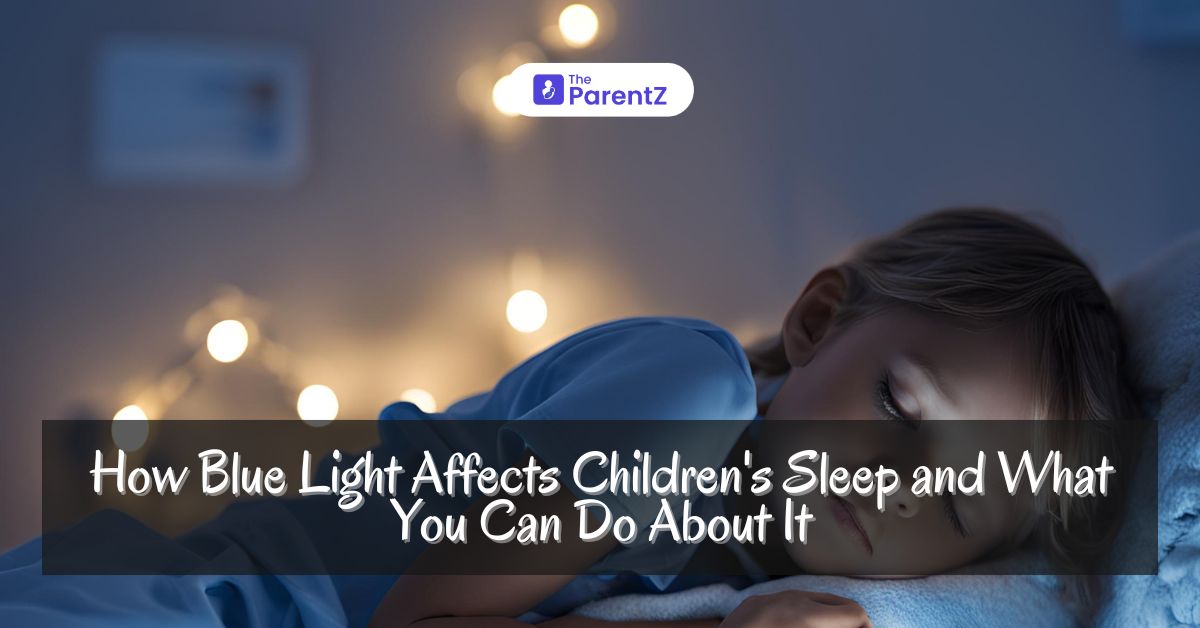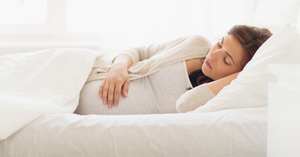In our tech-driven world, smartphones and tablets have become a constant companion for children, offering entertainment, education, and a connection to their peers. However, the convenience of these devices comes with a potential downside: disrupted sleep. The culprit? Blue light.
Understanding the Science of Blue Light and Sleep
Blue light is a natural part of the light spectrum, present in sunlight and emitted by artificial sources like LED screens. During the day, blue light plays a vital role in regulating our circadian rhythm, the internal clock that tells our body when to sleep and wake. Exposure to sunlight helps suppress melatonin production, a hormone that promotes sleepiness. As the sun sets and blue light levels decrease, melatonin production naturally increases, preparing us for sleep.
The Issue with Evening Screen Time and Disrupted Sleep Patterns
The problem arises when children are exposed to excessive blue light in the evening, particularly from electronic devices. The blue light emitted by these screens mimics sunlight, tricking the body into thinking it’s daytime. This disrupts the natural production of melatonin, making it harder to fall asleep and stay asleep through the night.
Consequences of Sleep Deprivation in Children: Why Sleep Matters
Getting a good night’s sleep is crucial for a child’s overall health and well-being. Here’s why sleep deprivation can have a significant impact:
- Impact on Learning and Development: Insufficient sleep can hinder cognitive function, memory, and concentration. This can negatively impact a child’s ability to learn and perform well in school.
- Mood Swings and Behavioral Issues: Sleep deprivation can lead to irritability, difficulty regulating emotions, and hyperactivity in children.
- Weakened Immune System: Sleep plays a critical role in immune function. Poor sleep makes children more susceptible to illness and hinders their body’s ability to fight off infections.
- Increased Risk of Obesity:Studies suggest a link between sleep deprivation and increased risk of obesity in children. Lack of sleep can disrupt hormones that regulate appetite, leading to increased cravings and decreased feelings of satiety.
Data on Blue Light and Sleep: The Research Behind the Impact
Here are some concerning facts highlighting the impact of blue light on sleep, supported by research:
- A study published in the journal Pediatrics found that teenagers who used electronic devices for more than two hours before bed were more likely to experience sleep problems, such as difficulty falling asleep, restless sleep, and waking up feeling tired.
- Research published in Nature Scientific Reports showed that even brief exposure to blue light in the evening can suppress melatonin production and delay sleep onset by as much as an hour. This can significantly disrupt sleep patterns and lead to daytime fatigue.
Beyond Blue Light: Other Factors Affecting Children’s Sleep
While blue light is a major contributor to sleep disruption, other factors can also play a role:
- Inconsistent Sleep Schedules:Going to bed and waking up at irregular times can confuse the body’s internal clock and make it harder to fall asleep and wake up feeling refreshed.
- Stimulating Activities Before Bed: Engaging in vigorous physical activity or watching stimulating content close to bedtime can make it harder to wind down and transition to sleep.
- Anxiety and Stress: Children experiencing anxiety or stress may find it difficult to quiet their minds and fall asleep.
- Medical Conditions: Certain medical conditions, such as sleep apnea or restless leg syndrome, can disrupt sleep patterns and require medical attention.
Helping Your Child Sleep Soundly: Practical Solutions for Parents
Fortunately, there are several steps you can take to minimize the impact of blue light and other factors on your child’s sleep:
- Establish Screen Curfews: Set clear limits on device use before bedtime. Aim for at least an hour (ideally two) of screen-free time before lights out. This allows the body’s natural melatonin production to ramp up.
- Embrace “Blue Light Filtering” Apps or Settings: Many devices offer built-in settings or apps that reduce blue light emission in the evening. These features can help minimize the disruptive effects of blue light on sleep patterns.
- Invest in Blue Light Blocking Glasses: Consider blue light blocking glasses for children who struggle to wind down after screen time. While the research on their effectiveness is ongoing, these glasses may offer some additional benefit.
- Focus on Relaxing Routines:Create a calming bedtime routine that includes activities like reading, taking a bath, or listening to soothing music. This helps signal to the body that it’s time to wind down and prepare for sleep.
- Optimize the Sleep Environment:Ensure the bedroom is dark, quiet, and cool – ideal conditions for promoting sleep. Invest in blackout curtains, a white noise machine, andand a comfortable mattress to create a sleep-conducive space.
- Promote Regular Sleep Schedules: Encourage your child to go to bed and wake up at consistent times each day, even on weekends. This helps regulate the body’s natural sleep-wake cycle.
- Address Underlying Issues: If you suspect anxiety, stress, or a medical condition may be contributing to your child’s sleep problems, talk to their pediatrician. Early intervention and addressing the root cause can significantly improve sleep quality.
- Lead by Example: Children learn by observing their parents. Establish healthy sleep habits yourself and avoid screen time in the bedroom. This creates a positive sleep environment for the entire family.
- Remember: Consistency is key! Implementing these strategies consistently will help regulate your child’s sleep patterns and ensure they get the restorative sleep they need to thrive.
Looking Beyond the Immediate: Long-Term Effects of Blue Light Exposure
- While the focus of this article has been on the impact of blue light on children’s sleep, there’s growing concern about the long-term effects of blue light exposure on eye health, particularly the development of age-related macular degeneration (AMD). While more research is needed, it’s wise to instill healthy habits in children to minimize potential risks associated with excessive blue light exposure.
Conclusion: Creating a Sleep-Supportive Environment
In today’s digital world, it’s important to strike a balance. Technology offers numerous benefits, but it’s crucial to prioritize healthy sleep habits for children. By understanding the impact of blue light and other factors, implementing practical solutions, and creating a sleep-supportive environment, you can help your child get the quality sleep they need to grow, learn, and thrive. Sweet dreams!









Be the first one to comment on this story.